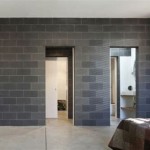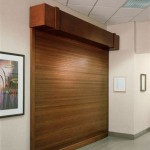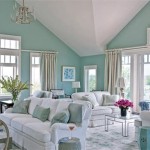Miami Interior Design Ideas: A Guide to Coastal Chic and Modern Luxury
Miami, a city synonymous with sun, beaches, and vibrant culture, boasts a unique interior design aesthetic that blends coastal influences, modern sensibilities, and luxurious touches. Understanding the fundamental principles and design elements that define Miami interior design is crucial for those seeking to create spaces that reflect the city's dynamic spirit.
Miami interior design is not simply about replicating a generic beach house look. It is a sophisticated approach that incorporates natural light, organic materials, and bold accents, resulting in spaces that are both inviting and visually stunning. The city's architectural landscape, ranging from Art Deco masterpieces to sleek modern towers, also influences the design choices made within these structures. The aim is to create interiors that are both functionally efficient and aesthetically pleasing, reflecting the sophisticated and cosmopolitan lifestyle associated with Miami.
Achieving a successful Miami-inspired interior requires careful consideration of several key factors, including space planning, color palettes, material selection, and the integration of indoor and outdoor living. The following sections delve into these key aspects, providing practical insights and ideas for transforming spaces into oases of Miami modernism.
Embracing Natural Light and Open Spaces
Miami's abundant sunshine is a defining characteristic, and interior design in the city strategically maximizes natural light exposure. Large windows, often stretching from floor to ceiling, are common features, allowing sunlight to flood the interiors. The use of sheer curtains or blinds helps to filter harsh sunlight while maintaining a bright and airy atmosphere. Mirror placement is also strategically employed to reflect and amplify natural light throughout the space.
The emphasis on natural light extends to the overall space planning. Open floor plans are prevalent, creating a seamless flow between living, dining, and kitchen areas. This open concept design promotes a sense of spaciousness and encourages social interaction. Minimizing walls and partitions allows light to penetrate deeper into the interior, enhancing the feeling of connection with the outdoors.
In addition to spatial layout, the choice of materials also plays a role in maximizing light reflection. Light-colored walls, such as white, off-white, or pale pastels, reflect light effectively, brightening the space. Glossy or semi-gloss finishes on walls and furniture can further enhance light reflection, creating a luminous effect. The use of glass and metal accents also contributes to this overall strategy of maximizing natural light.
Integrating indoor and outdoor spaces is another crucial aspect of Miami interior design. Sliding glass doors or large windows open onto balconies, patios, or gardens, blurring the boundaries between the interior and exterior. This connection with the outdoors allows natural light to penetrate the interior, creating a sense of openness and connection with nature. Outdoor living spaces are often designed as extensions of the interior, mirroring the design style and incorporating comfortable seating, dining areas, and lush landscaping.
Coastal-Inspired Color Palettes and Material Selections
The color palettes commonly used in Miami interior design draw inspiration from the surrounding coastal environment. Shades of blue, ranging from soft aquamarine to deep navy, evoke the colors of the ocean and sky. Sandy beiges, warm grays, and creamy whites reflect the tones of the beach and dunes. These neutral colors provide a calming backdrop for bolder accents and pops of color.
While neutral tones dominate, Miami interior design embraces vibrant accent colors that add energy and personality to the space. Coral, turquoise, and citrus hues, reminiscent of tropical flowers and sunsets, are often incorporated through artwork, textiles, and accessories. These pops of color create visual interest and prevent the space from feeling monotonous. The key is to use these accent colors strategically, ensuring that they complement the overall color scheme and do not overwhelm the space.
Material selection in Miami design often features natural and organic elements. Wood, particularly light-colored woods like oak or maple, is a popular choice for flooring, furniture, and cabinetry. These materials add warmth and texture to the space, creating a sense of connection with nature. Rattan, wicker, and seagrass are also commonly used for furniture and accessories, further enhancing the coastal aesthetic.
In addition to natural materials, modern Miami interior design incorporates sleek and sophisticated finishes. Glass, metal, and concrete are frequently used to create a contemporary and luxurious feel. These materials add a touch of refinement and contrast with the more organic elements. The combination of natural and modern materials creates a balanced and visually appealing space that reflects the diverse character of Miami.
Textiles play a crucial role in adding texture and visual interest to Miami interiors. Linen, cotton, and other natural fabrics are often used for upholstery, curtains, and bedding. These fabrics are breathable and lightweight, making them ideal for the warm Miami climate. Patterns inspired by nature, such as floral prints or geometric designs, are also commonly incorporated, adding a touch of personality and visual interest.
Modern Furnishings and Statement Art
Furnishings in Miami interior design lean towards a modern and minimalist aesthetic. Clean lines, simple silhouettes, and uncluttered surfaces are key characteristics. Furniture pieces are often chosen for their functionality and comfort, as well as their aesthetic appeal. The emphasis is on creating a space that is both stylish and livable.
While minimalism prevails, Miami interiors also incorporate statement pieces that add personality and visual impact. A bold sofa, a striking chandelier, or a unique coffee table can serve as focal points in the space. These statement pieces add character and prevent the space from feeling too sterile or impersonal. The selection of these pieces should be carefully considered to ensure that they complement the overall design scheme.
Art plays a significant role in Miami interior design, often serving as a reflection of the city's vibrant culture and artistic scene. Bold and colorful artwork is frequently used to add visual interest and personality to the space. Paintings, sculptures, and photographs that depict scenes of nature, urban landscapes, or abstract designs are commonly incorporated. The selection of artwork is a personal choice, but it should complement the overall design aesthetic and reflect the homeowner's individual style.
Lighting is another important element in Miami interior design. In addition to maximizing natural light, artificial lighting is used to create ambiance and highlight architectural features. Recessed lighting, pendant lights, and floor lamps are commonly used to illuminate the space. Dimmer switches allow for adjustable lighting levels, creating a mood that is both functional and inviting. The selection of lighting fixtures should complement the overall design style and enhance the aesthetic appeal of the space.
Accessories are used sparingly in Miami interiors, but they play a crucial role in adding personality and completing the look. Decorative pillows, throws, and vases are used to add color and texture to the space. Plants, both indoor and outdoor, are also commonly incorporated, bringing a touch of nature and freshness to the interior. The selection of accessories should be carefully curated to ensure that they complement the overall design scheme and do not clutter the space.
Ultimately, Miami interior design is a reflection of the city's vibrant culture and unique environment. By incorporating elements of natural light, coastal-inspired color palettes, and modern furnishings, it is possible to create spaces that are both stylish and inviting. This design aesthetic focuses on creating a relaxed and sophisticated atmosphere that reflects the cosmopolitan lifestyle of Miami.
By thoughtfully integrating these design principles, individuals can capture the essence of Miami's distinctive style, crafting interiors that exude effortless elegance and coastal charm. This translates into homes that represent not just a dwelling, but a vibrant expression of the Miami spirit, characterized by its captivating blend of modern luxury and relaxed coastal living.
The enduring appeal of Miami interior design lies in its versatility: its ability to adapt to various architectural styles and personalize individual preferences while remaining true to its core elements. It's about embracing the city's vibrant spirit and translating it into a living space that is both functional and aesthetically pleasing.

Miami Decorating Style How To Get The Luxe Look Decorilla Interior Design

Miami Home Style Guide

20 Designs You Can Steal From The Best Interior Designers In Miami

The Ultimate Home Design Inspiration Guide By Miami Interior Designers

Top Interior Designers Miami

Tips For Decorating A Luxury Living Condo Dkor Interiors

Our Top 10 Best Interior Designers In Miami That Will Inspire You Inspirations Essential Home

Interior Design Lesson Chic Miami Decor Décor Aid

Miami Interior Design Sophisticated Getaway Contemporary Room By Dkor Interiors Inc Designers Fl Houzz Ie

Spotlight On Miami Living Spaces Dkor Interiors
Related Posts








